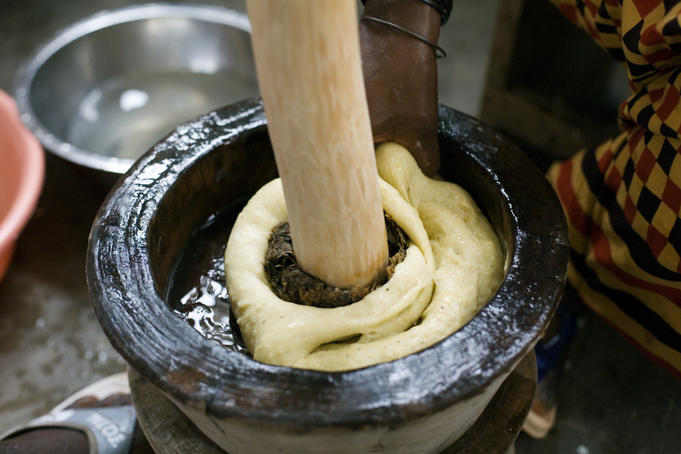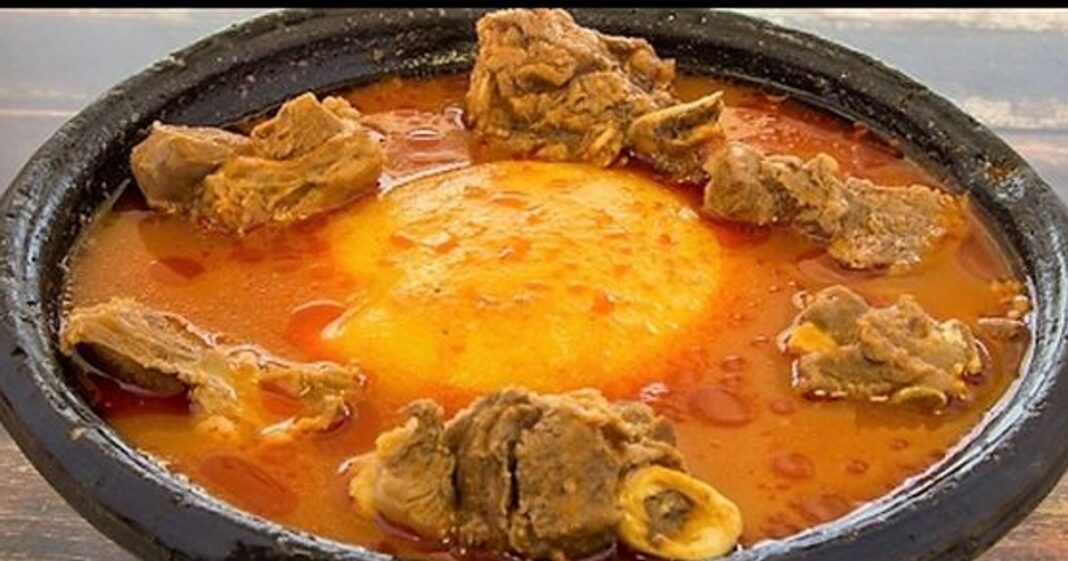In Ghana, few meals spark passion and pride like a well-pounded bowl of fufu. More than just food, fufu is a cultural experience, a nostalgic comfort, and a symbol of unity served hot in bowls across homes, chop bars, and celebrations.
Ask any Ghanaian what food reminds them of home, and chances are, “fufu” will top the list.
Fufu — typically made by pounding boiled cassava and plantain (or sometimes yam or cocoyam) — is the ultimate communal dish. It requires teamwork, patience, and rhythm.
Traditionally, it takes two: one to pound with a heavy wooden pestle and the other to turn and fold the mixture with wet hands. The sound of pounding fufu is music to many ears — a reminder of Sunday afternoons at Grandma’s house or a festive family gathering.
But what truly makes fufu the crown jewel of Ghanaian cuisine?

It’s the sauce that seals the deal
Fufu is rarely eaten alone. Its perfect companion? A rich, flavorful soup. From light soup and groundnut soup to palm nut and abenkwan, Ghanaians have mastered the art of creating broths that burst with local spices, herbs, and meats — goat, chicken, snails, fish, or smoked bushmeat. Each pairing is a masterpiece, tailored by region, tribe, and personal preference.
It unites every region
While its preparation styles vary, fufu is enjoyed in all corners of Ghana. In the Ashanti and Brong Ahafo regions, it’s common to see plantain-and-cassava combinations. In the Volta Region, fufu might be made solely from yam, while in the north, variations include pounded millet or yam flour. Despite the differences, the dish bridges regional boundaries and brings people together — regardless of tribe or background.
More than a meal — It’s a feeling
To many, fufu is love on a plate. It represents care — a dish you don’t just throw together quickly. It takes effort, time, and often teamwork. It’s also therapeutic. For Ghanaians living abroad, cravings for fufu go beyond hunger — they reflect a longing for home and identity.
Health benefits with a hearty twist
Beyond taste and tradition, fufu has some nutritional perks. Cassava and plantain are high in carbohydrates, giving the body energy. Paired with protein-rich soups and leafy vegetables, the dish becomes a wholesome, balanced meal.
Why it stands tall

In the bustling world of fast food and trendy dishes, fufu has stood the test of time. It’s not just the taste, texture, or tradition. It’s how fufu wraps itself around the Ghanaian soul — a true comfort food that says, “You’re home.”
So, is fufu Ghana’s most loved dish? For many, the answer is a resounding yes. From the pounding in the mortar to the last scoop of soup, fufu is not just food — it’s a cherished story passed from generation to generation.

